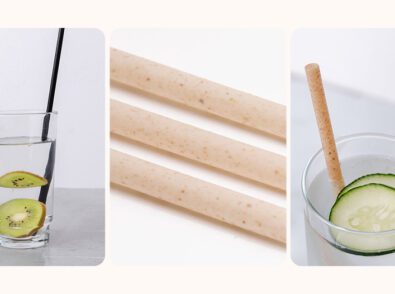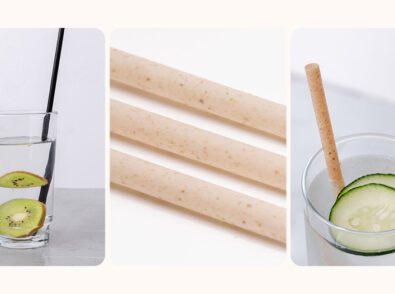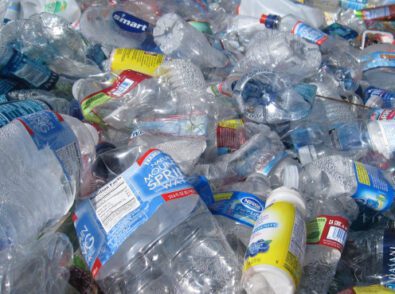Guide to Biodegradable Straws
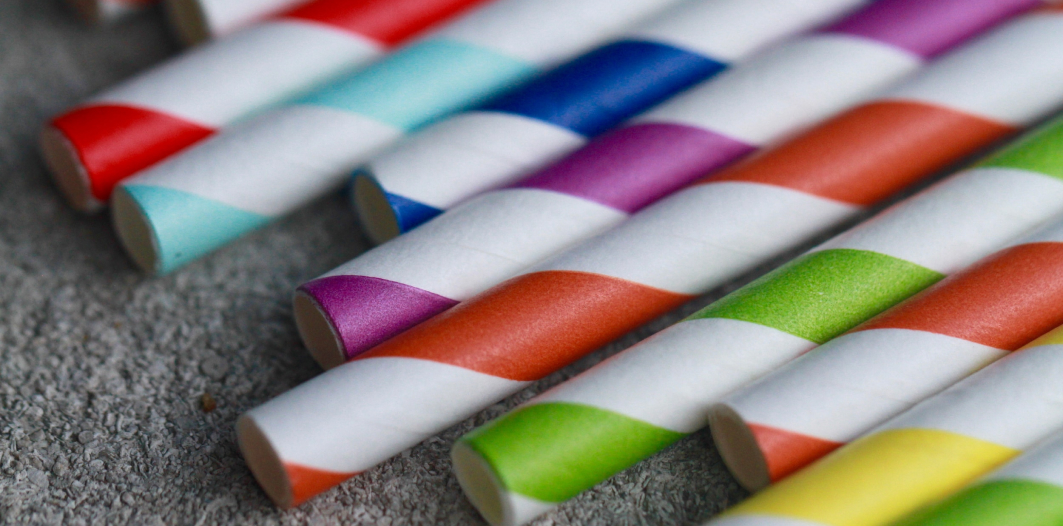
Of the nearly eight million tons of plastic waste, plastic straws make up about 4% of that total. They are also among the top 10 contributors to ocean marine debris. Plastic straws are not recyclable, partly because of their size but also because most are tossed into the trash and end up in a landfill.
Biodegradable straws are starting to replace plastic straws, but with so many different types on the market today, you might be wondering how to choose. Biodegradable straws can be made from paper, bioplastics like PLA, PHA, agave compounds, cane fiber, hay, bamboo, or rice.
Today we’ll look at the types of biodegradable straws, what they’re made from, and how to dispose of them. Ultimately, the product you choose should align with a sustainable disposal program to ensure they have the chance to break down efficiently and safely.
Why Use Biodegradable Straws?
Biodegradable straws are a type of straw that can decompose naturally into the environment without causing harm. People like straws for various reasons – to protect the enamel on their teeth, for sanitary reasons, and for convenience when consuming cold takeout beverages.
As the world moves towards a more sustainable future, plastic straws are already the subject of bans worldwide. Without giving up the convenience that straws provide, biodegradable straws are becoming the preferred choice for businesses and consumers who want to reduce their environmental impact.
When discussing biodegradability, we refer to a product’s capacity to break down in an environment. Different materials break down at different rates, so knowing and understanding the properties of each material may help you choose the best biodegradable straw for your needs.
Types of Biodegradable Straws
Many types of biodegradable straws are available, each with unique properties and features.
PHA Straws
Polyhydroxyalkanoate (PHA) is a biodegradable thermoplastic produced from renewable resources such as cornstarch, sugarcane, and canola and soy seeds. Compared to paper straws, PHA straws are more versatile and have a longer shelf life, making them a more sustainable and durable option for restaurants and other food service outlets. They can withstand high temperatures and are FDA-approved for food service applications.
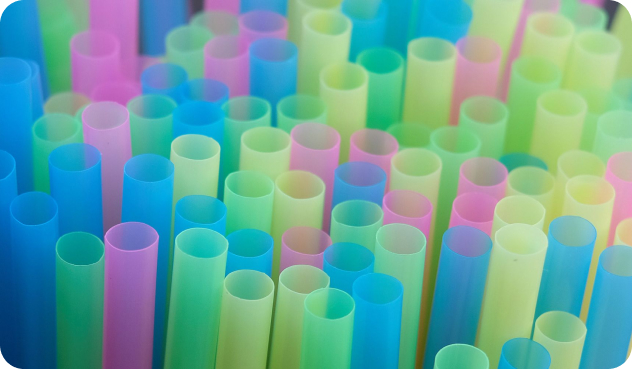
PHA Straws Pros
- Biodegradable
- Made from renewable sources
- Durable
- Sustainable
- Performs and looks like plastic
- Lots of color, size, and style options
PHA Straws Cons
- Most expensive option in the market
- Limited supply
PLA Straws
Polylactic acid (PLA) is a critical innovation in plastic alternatives. PLA straws are an eco-friendly alternative to traditional plastic straws. PLA is a bioplastic made from natural resources like agave, cornstarch, or sugarcane.
The process of making PLA straws involves a delicate balance of temperature, pressure, and chemistry to turn these raw materials into a sturdy, flexible, and environmentally safe product. Once heated, the material is molded into straw-shaped tubes and cut to size. The result is a product that can serve the same function as traditional plastic straws while reducing the environmental impact caused by non-biodegradable plastics.
PLA is biodegradable under certain conditions. PLA straws cannot be sent to landfills as they require high temperatures to break down. Proper disposal and efficient biodegradation of PLA require industrial composting.
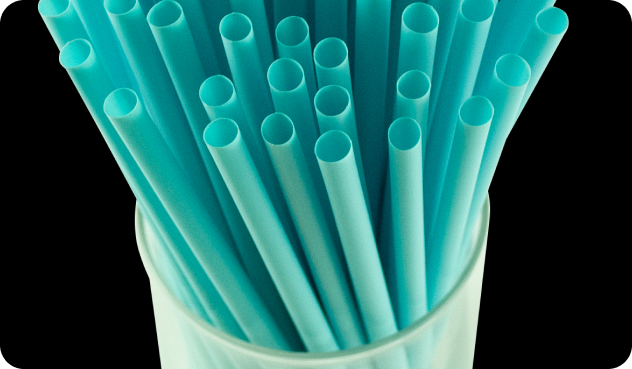
PLA Straws Pros
- Biodegradable
- Made from renewable sources
- Durable
- Sustainable
- Performs and looks like plastic
- Lots of color, size, and style options
PLA Straws Cons
- Will not biodegrade efficiently in a landfill
- Requires industrial composting
Paper Straws
Paper straws have gained popularity due to their biodegradable nature and eco-friendliness. Unlike plastic straws, they do not harm the environment and can be easily disposed of with regular trash or compost. Paper straws are a viable, cost-effective solution to reduce plastic waste and are significantly more sustainable.
Paper straws are made from FDA-approved food-grade paper and do not contain BPA plastics; however, use cases and durability are considerations. Paper straws will get soggy if left in liquid, and some consumers don’t like the feel of paper in their mouths.

Paper Straws Pros
- Safe and toxin-free
- Biodegradable
- Marine biodegradable
- Inexpensive
Paper Straws Cons
- Look and feel might not appeal to some
- Becomes soggy in liquid
Agave Straws and Other
Agave straws are made from a fiber produced from FSC-certified waste fibers from the agave plant. Using waste materials with no other purpose means we are upcycling plant waste and turning it into something useful.
The primary purpose of agave is to produce Tequila and Mezcal, an industry that uses quite a lot of the plant but leaves behind massive amounts of unusable waste. Turning that waste into products like straws and other single-use food packaging products is an excellent way to solve both problems—finding a durable, sustainable alternative to bioplastics and reducing the waste left behind by beverage alcohol manufacturers.
Agave straws are sturdy and long lasting, making them a durable and sustainable alternative to plastic. Agave straws are non-toxic and biodegradable. They are guaranteed to break down by 95% in the first 180 days in an active landfill, making them a superior choice for the environment over plastic straws.
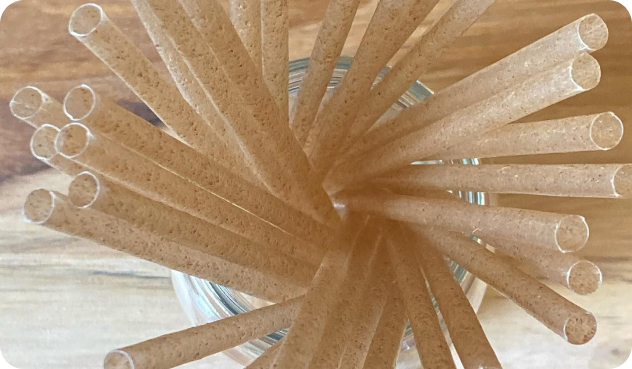
Agave Straws Pros
- Biobased material that can be disposed of regularly in a trash can
- Durable and recyclable
- 95% biodegradable in the first 180 days
- Performs similarly to plastic straws
Agave Straws Cons
- Limited suppliers of this product
Safe Disposal of Biodegradable Straws
Biodegradable straws are made from natural materials that break down over time, making them a more eco-friendly choice. However, not all biodegradable straws are the same, nor can they be disposed of similarly.
While paper and agave straws are biodegradable in landfills, straws made from bioplastics like PHA and PLA require high heat to break down and must be disposed of through an industrial composting program.
Choosing sustainable straws is an excellent place to start for restaurants and consumers looking to reduce their environmental impact. To help you decide what type of biodegradable straws are best for your needs, consider how you will dispose of them. Paper and agave straws might be best for home use, or when there is no access to industrial composting.

